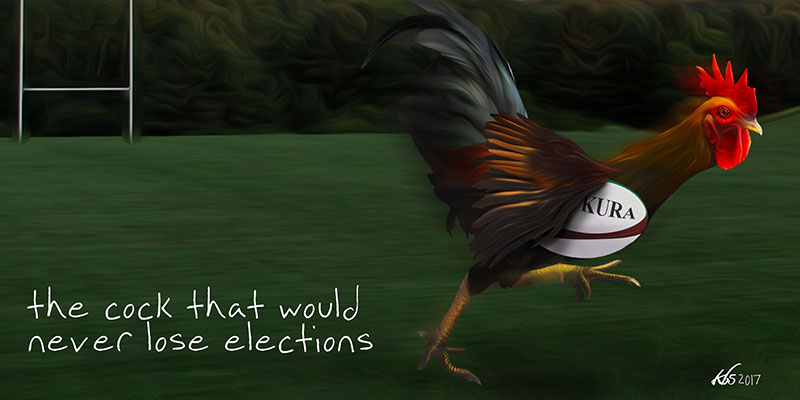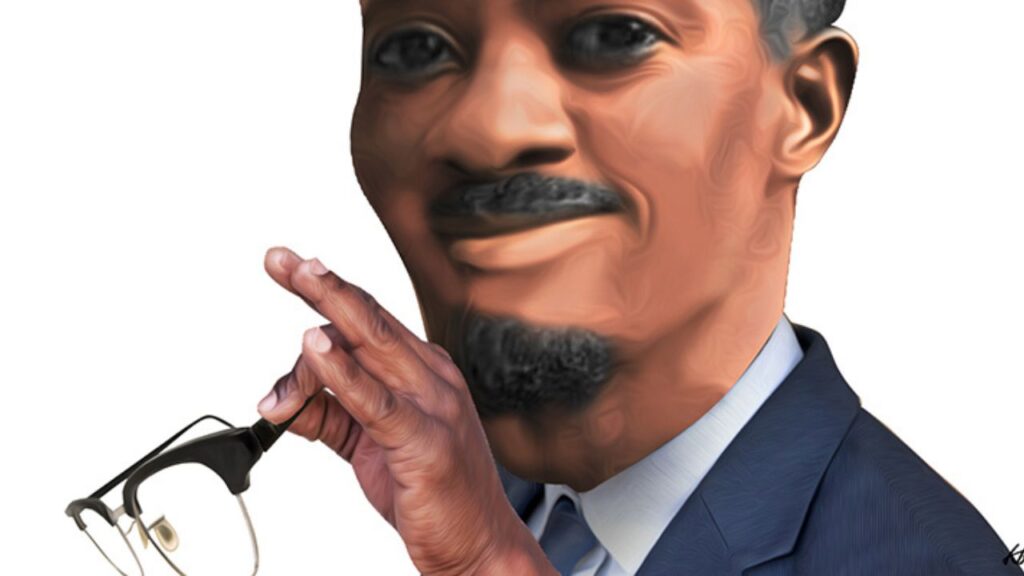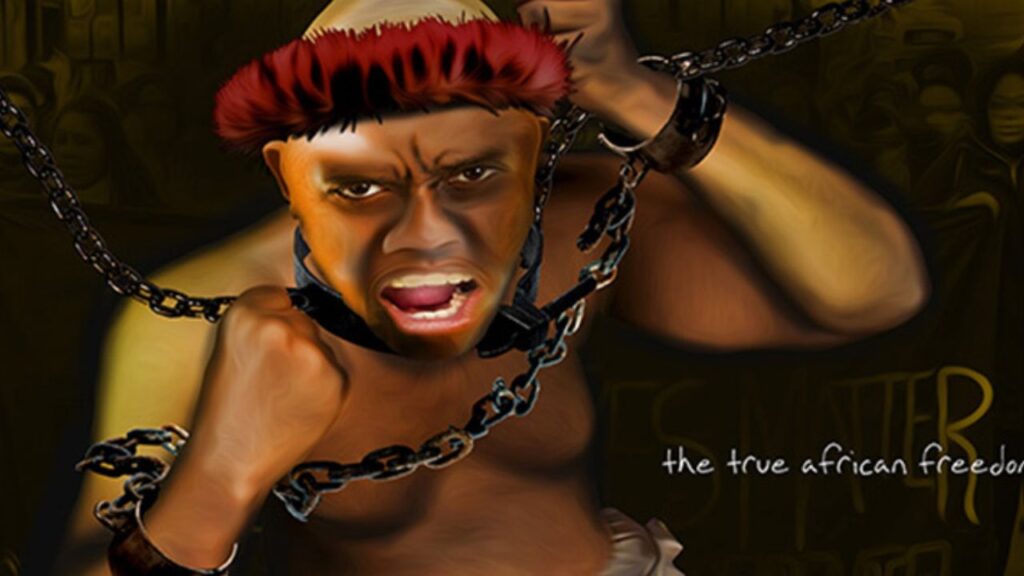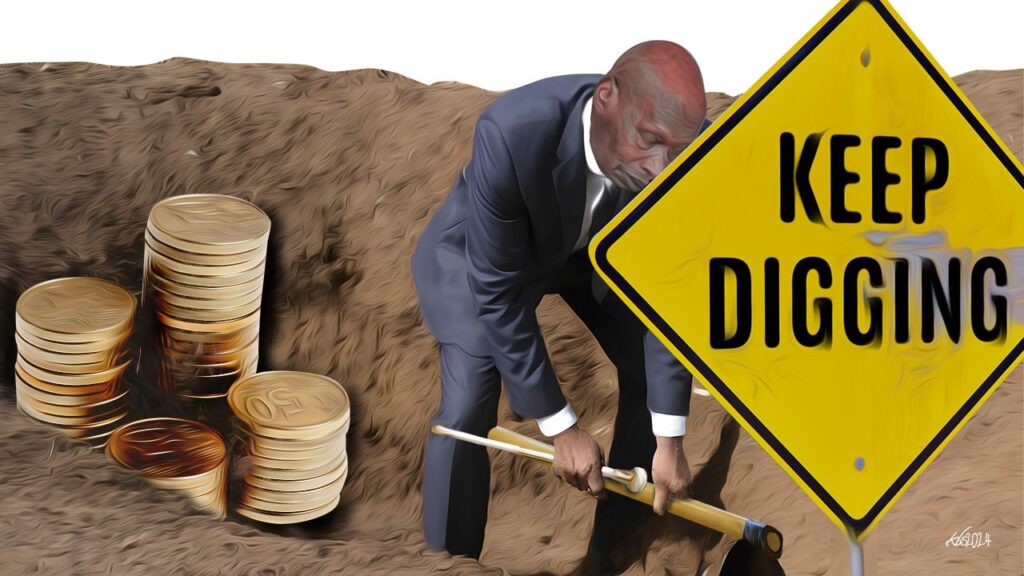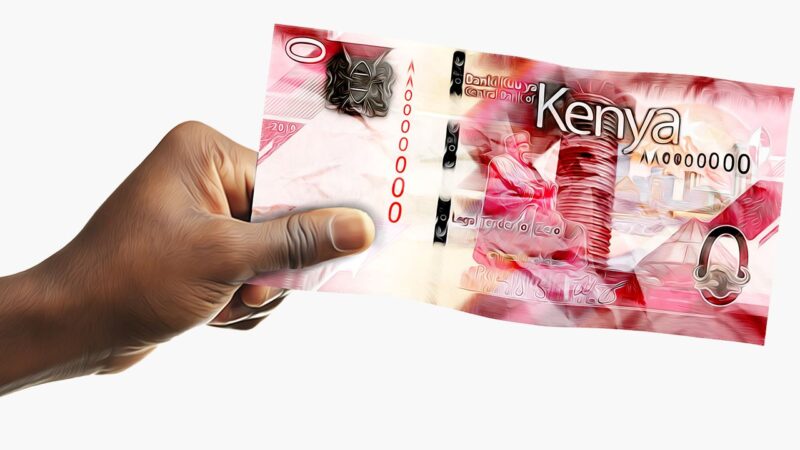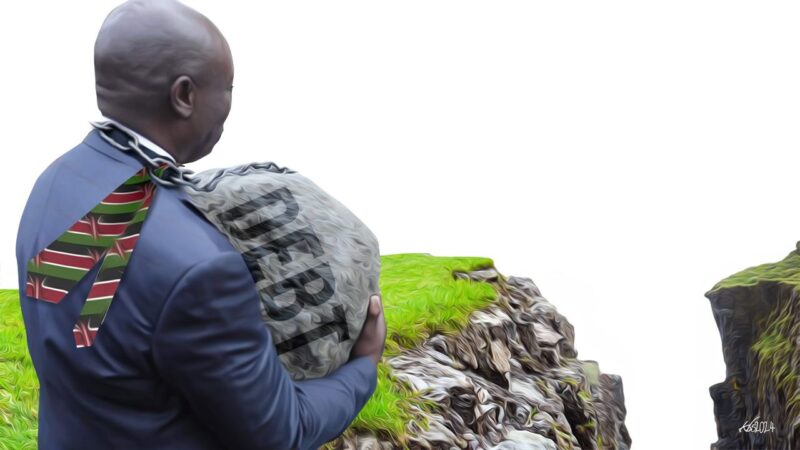The 8 August 2017 general election in Kenya was like no other. On 1 September, the Supreme Court of Kenya nullified the presidential election that saw President Uhuru Kenyatta obtain the majority of the votes. This was his nemesis Raila Odinga’s second petition, having challenged Uhuru’s first victory in 2013. It was the first time a presidential election had ever been invalidated in Africa, and it left Kenya adrift in unchartered waters.
On 30 October, when announcing the presidential results for the subsequent repeat poll on 26 October, the Independent Electoral and Boundaries Commission (IEBC)’s chairman Wafula Chebukati noted the importance of asking key questions and comparing Kenya’s electoral process to those of other African countries. “We need to pause and ask ourselves why the Kenyan presidential election is so competitive, what the roots of popularisation in such elections are and why IEBC is never perceived as a fair umpire,” he stated.
He was obviously addressing the political stalemate that the country finds itself in today, as well as past post-election standoffs, key among them being the 2007-08 violence that followed the hotly contested presidential race between Raila and then incumbent president, Mwai Kibaki.
One of the key highlights of the 2013 petition was the rejection of Raila’s 800-page affidavit, which detailed evidence of alleged rigging. Some senior jurists, including the former Law Society of Kenya boss Apollo Mboya, believe that had the affidavit been admitted, it would have changed the Supreme Court’s reasoning when preparing its final verdict. Justice Mohammed Ibrahim, who sat in on the case, was later reported to have said that with more time than the 14 days that the Constitution allows for the hearing of petitions, the court might have come to a different decision. Uhuru’s lawyer in both petitions, Ahmednasir Abdullahi, is on record saying that the 2013 case was stronger than the 2017 one.
Other than the 2002 general election that brought the National Rainbow Coalition (NARC) to power, all the other six presidential elections held in the multiparty era have been challenged in courts.
Soon after the nullification of the August 8 election, Raila vowed that there would be no election if the IEBC did not make changes to address the “illegalities and irregularities” cited by the Supreme Court. On September 17, Raila, together with his National Super Alliance (NASA) co-principals Kalonzo Musyoka, Musalia Mudavadi and Senator Moses Wetang’ula, announced what they called “irreducible minimums”.
Among their demands was the removal of the IEBC’s CEO Ezra Chiloba and some commissioners before the fresh presidential election. When these changes were not forthcoming, Raila “withdrew” from the race.
History of election petitions
However, Raila is not the first candidate to petition against a controversial election. Other than the 2002 general election that brought the National Rainbow Coalition (NARC) to power, all the other six presidential elections held in the multiparty era have been challenged in courts. In fact, elections have been a source of controversy pretty much since the establishment of the Kenya colony in 1920. In fact, since 2017 we have consistently changed our electoral laws under the Legislative Council, or Legco as it was known.
The Kenya National Assembly’s official record, The Hansard of October 24, 1917, notes that the Legco sat on February 12 and created a Special Committee on Elective Representation to consider “the question of elective representation”. The committee was to look into steps to consider to provide for the election by the public of the European non-official members of the LegCo, and specifically on the qualifications of the electors. It unanimously passed that not everyone could vote. Only European male adults would qualify to vote in the first election in 1920. By 1924 suffrage had been extended to Indians, with five seats in the Legislative Council, and to the Arabs who got one seat.
However, whilst all adult Indian residents were given the right to vote, in the Arab community only men literate in Arabic or Kiswahili and resident in the country for two years were enfranchised, as the community had requested that women not be given the right to vote. The African majority, whilst not entitled to vote, had one member appointed to represent them.
The electoral process has been a victim of state capture, a type of systemic political corruption in which private interests significantly influence a state’s decision-making processes to their own advantage.
Despite this, the Indians demanded equal representation with the Europeans and when this demand was not met, they boycotted that year’s poll altogether. This was also the case in the 1927 poll, which only saw a single Indian candidate stand.
In 1944, colonial secretary Oliver Lyttelton effected some electoral reforms to allow an African representative in the LegCo. His name was Eliud Mathu.
The Open Society’s comparative study on the contribution of electoral commissions to strengthening democracy, reviewed by AfriMAP, indicates that in 1956, the Legislative Council (African Representation) Act, 1956 (No. 10) was passed, providing for the first six African elected members.
With multiparty politics in the offing, establishing an autonomous body became inevitable and led to the Election Laws Amendment Act, 1991, the study notes. The Act abolished the position of Supervisor of Elections, as it was then known, and reinvested all election management powers in the Electoral Commission of Kenya (ECK) as we knew it until 2008, when it was disbanded.
And still, despite consistent elections every five [or four years in pre-colonial era] since 1920, the country has not found a way of solving any contentious election-related issues. This has resulted in attacks on the electoral management body and its officials, in approaches that Wetang’ula in 2016 referred to as extra-legal means. It is now clear it matters not how many time we change the commissioners or make laws because electoral reforms are more than just that.
As historian Godfrey Sang notes, “We have found ourselves changing election rules every so often as well as the electoral commission and its officers. We keep changing the laws to suit emerging situations, but for how long and at what cost? … A high turnover of laws or personnel weakens institutions, destroys traditions, stifles growth or continuity and obliterates institutional memory.”
Chebukati himself narrated how politicians found a punching bag in him in this electoral process. While some quarters complained how a weak chairman he was, those in the commission claimed that he was principled couldn’t be influenced. He said he couldn’t please everyone.
And this is an experience shared by his predecessor Isaack Hassan.
State capture
In sections of his forthcoming memoirs released during the Sixteenth Cambridge Conference on Electoral Democracy in the Commonwealth in Cambridge, England, and published in part by The Star newspaper in August this year, Isaack Hassan expressed how Raila frustrated him after the disputed 2013 general election. Since then, Hassan said, every step the IEBC undertook was castigated to portray it as incompetent and “in bed with the governing party”.
Following the ruling, and in sentiments that would be echoed by NASA two decades later, Kibaki declared, “Moi would still be a fraudulent president. He won’t be genuine because he rigged his way to that position … He will not have any moral authority over the citizens if he was to rule them by force.”
“In a country with no culture of conceding electoral defeat, three-and-a-half years were spent by these opposition leaders honing a sense of victimhood to the effect that the presidential elections were rigged,” Hassan added.
But does this mean that elections have not been rigged in this country? Is Hassan insinuating that the election management body has not in the past been influenced by the incumbents or by the status quo? I think otherwise. In fact, I would say that electoral management bodies have been the source of electoral thuggery and authoritarianism in this country, which has resulted in violent polls. The electoral process has been a victim of state capture, a type of systemic political corruption in which private interests significantly influence a state’s decision-making processes to their own advantage.
Aziz Rana, in an article headlined “Against Second Rate Democracy in Kenya” published in the Boston Review on 12 October 2017, stated, “Kenya’s ruling elites have been modelling an increasingly sophisticated version of electoral authoritarianism over the last decade. For them, elections are merely a tool for maintaining power rather than for presenting a real opportunity to transfer authority.”
Electoral authoritarian regimes hold regular multiparty elections for parliamentary, presidential and other positions but still violate liberal-democratic minimum standards of freedom, fairness and integrity in systematic ways as to render elections instruments of authoritarian rule, rather than instruments of democracy.
This is particularly discernible in Kenya in the multiparty era. Against the backdrop of the Mlolongo voting system in 1988, the opposition was not taking any chances in 1992, when the country was scheduled to have its first multiparty elections since 1966. Babior Newton in Raila Conspiracy: The Secrets Behind Denying Him the Kenyan Presidency, captures a moment when Raila was asked at a press conference whether he advocated guerrilla welfare. His response was “positive NO”, adding, “Violence breeds violence”. He explained that people would not accept rigged results and, if they lost confidence in the ballot, they might feel justified in seeking alternative means of change, just as the African National Congress in South Africa had done against apartheid. This line of reasoning seems to be behind the recent formation of the Raila-led National Resistance Movement, a wing within NASA, to fight “electoral injustices”.
In December 1992, Newton notes, Raila, doubting the credibility of the polls, threatened a boycott. He said, “We have told [Electoral Commission of Kenya chairman Justice Zacchaeus] Chesoni that unless these cases are dealt with and corrected as soon as possible, we shall be forced to reconsider our participation in an election that has been rigged from start to finish”.
Raila, then the Vice Chairman of the General Purposes Committee of the Forum for Restoration of Democracy, led by his father Jaramogi Oginga Oinga, was referring to a 13-point proposal on how to conduct free and fair elections presented to the ECK by opposition parties. The document was signed by Waruru Kanja, Uhuru’s uncle George Muhoho, Mukaru Ng’ang’a and Mohamed Akram on behalf of Kibaki’s Democratic Party, Kenda, Ford K, and the Liberal Democratic Party. George Anyona, the Kenya Social Congress candidate, who had been released from prison that year, had in November moved to the High Court seeking to block the general election until the ECK had complied with the provisions of the National Assembly and Presidential Elections Act, and listed 32 grounds to support his application.
Electoral reforms
One of the key reforms effected by Chesoni was that the chairman inform the nation that the provincial administration would have no role in the 1992 election. The ECK had recruited and trained returning officers, who would declare the results “at the constituency level”. Before then, it was district officers who acted as returning officers.
One of the main reasons why Moi chose Uhuru was because he wanted someone to watch over his interests when he retired.
Despite this push, the divided opposition lost the election to the incumbent, President Daniel arap Moi, and to the governing Kenya African National Union (KANU) party, which scooped 100 out of the 188 parliamentary seats. However, the results were marred by allegations of ballot-box stuffing and government-sponsored targeted ethnic violence in the Rift Valley. Kenneth Matiba of Ford Asili, who had finished second, petitioned the outcome in the courts but in February 1994, the petition was dismissed because Matiba, who had suffered a stroke in detention before the elections and was paralysed in both hands, had not personally signed the election petition papers.
Matiba had filed two petitions against Moi’s election. The first one was because Moi had already served two terms and was, therefore, ineligible for a third term. The court struck out this petition in May 1993 since he was already pursuing another petition.
In the 1997 general election, the opposition was more vocal in calling for the removal of Chesoni as the ECK chairman. Chesoni left and his deputy, Samuel Kivuitu, took over. I should mention that before the election, Paul Muite, Matiba and one of the so-called “seven bearded sisters”, James Orengo, had warned of a civil disobedience campaign if the government didn’t effect constitutional reforms, which were a key agenda leading to the polls.
Raila, then the chair of the National Development Party (NDP), was also more concerned with the process as he was making his first stab at the presidency. At a press conference at Chester House in Nairobi, he had said that there was a need for “rapid institutional reforms prior to and after the election”. In a precursor to his demand twenty years later, he insisted on what he called “six minimum but sacred constitutional reforms”. If these reforms were not effected, NDP would join all other democratic forces to ensure that there were no elections. This tied in to the campaign of “No Reforms, No Elections” pioneered by civil society organisations that had adopted an agenda for constitutional reform to be implemented prior to the election and instituted a campaign of civil disobedience and public protests to pressure the government.
However, as articulated by Joel Barkan and Njuguna Ng’ethe in their paper “Kenya Tries Again”, under pressure, Moi changed tactics. “For the first time, he agreed to negotiate with the opposition, albeit on a highly circumscribed basis. First, talks would be limited to the crafting of ‘minimal’ reforms i.e. those demanded by the opposition to create a ‘level playing field’ for the elections and guarantee their participation.” Importantly, negotiations would take place within parliament via the Inter-Parties Parliamentary Group (IPPG), which played to the interests of opposition politicians but excluded the activists who demanded more fundamental and comprehensive change.
Having so gutted – at least temporarily – the momentum for reform, Moi went on to win the December 1997 election with 40.4 per cent of the vote. Mwai Kibaki got 30.8 per cent while Raila managed 10.8 per cent. Others in the race were Kijana Wamalwa and Charity Ngilu. Raila, who had opposed the IPPG talks, acknowledging in Parliament that they were “meant to hijack the reform process and sabotage it”, later himself had a change of heart and eventually dissolved the NDP into Moi’s KANU.
In 1998, Kibaki petitioned against Moi’s win by publishing the notice of the petition in the Kenya Gazette. The Democratic Party presidential candidate alleged that the ECK had conspired with Smith and Ouzman, the British firm that printed the ballot papers, to print two sets of papers to facilitate massive rigging. (The same firm was later implicated in the 2013 “Chickengate” scandal that led its top officials to be charged and jailed in the UK.)
However, based on another technicality, judges Emmanuel O’Kubasu, Mbogholi Msagha and Moijo ole Keiwua ruled that Kibaki should have served Moi and Kivuitu with the petition personally. That ruling was upheld in 1999 at the Court of Appeal by judges Riaga Omolo, Chief Justice Bernard Chunga, A.B. Shah, A.A. Lakha and Owuor J.J.
Following the ruling, and in sentiments that would be echoed by NASA two decades later, Kibaki declared, “Moi would still be a fraudulent president. He won’t be genuine because he rigged his way to that position … He will not have any moral authority over the citizens if he was to rule them by force.”
2002 and after
Unlike in the previous two elections, Moi was not on the ballot in 2002 and his preferred heir, Uhuru Kenyatta, faced a united opposition under the NARC Coalition. The coalition eventually brought together Kibaki, the presidential candidate, Raila, Ngilu and Kalonzo. Soon after it became clear that Kibaki was going to win the election, Uhuru conceded defeat and Moi offered a smooth transition.
But it is what made Moi go against the likes of Raila, Kalonzo and Mudavadi in his preference for Uhuru as his successor that provides a clue as to why the presidency is so hotly contested. Newton notes that by forcing his close aide, Mark Too, to give up his seat as nominated MP in 2001, which paved the way for Moi to nominate Uhuru to parliament and make him Local Government minister, the president was preparing the young Kenyatta to take over the reins of power. One of the main reasons why Moi chose Uhuru was because he wanted someone to watch over his interests when he retired. It is widely known that Moi’s predecessor and Uhuru’s dad, Mzee Jomo Kenyatta, had amassed a vast estate, much of it through questionable means. Throughout his 24-year presidency, Moi had turned a blind eye to this and had not sought to punish the Kenyatta family. He evidently believed Uhuru would return the favour as it is well known that Moi’s regime was itself steeped in corruption and other dirty deals.
This private arrangement demonstrates that the quest for power is largely driven by the desire of a small group of powerful elites to maintain, rather than reform, the extractive state.
In 2007, electoral thuggery under Kibaki and his Mt. Kenya Mafia clique – who used state machinery to campaign, influence and rig the election – set alight the tinderbox created by a history of land-related problems, marginalisation and injustices. More than 1,300 people died and hundreds of thousands were displaced after the disputed 2007 election. Just like in 1992 and 1997, politicians again fanned militia and state violence in the service of personal ambition, with the presidency, and the control of the state, being the prize. The violence and the political crisis it generated gave added impetus to the constitutional reform agenda, which Kibaki, like Moi before him, had attempted to bastardise. This resulted ultimately in the promulgation of the new 2010 Constitution. And although this constitution was, at least in theory, designed to curtail the powers and appeal of the presidency, the current crisis demonstrates that this vision is yet to be realised.
The infamous Madimoni moment in the run-up to the 2013 election serves as an illustration of the behind-the-scene deals that seek to maintain the status quo. As the Nation reported, powerful men in the Kibaki administration were not comfortable with either Raila or Uhuru taking over because “they never really belonged to the system”.
“Most senior civil servants felt that the dramatic ways of Odinga and Kenyatta could lead to the reorganisation of the public service in ways that could render them jobless. Their only bet? Wycliffe Musalia Mudavadi,” stated the Nation report.
Uhuru and his running mate, William Ruto, secretly entered into an agreement with Mudavadi so that the latter would stand in the elections. In this arrangement, Uhuru would drop out of the race in favour of Mudavadi. Cabinet slots would be shared out, with Uhuru’s The National Alliance getting the lion’s share of 45 per cent, Ruto’s United Republican Party getting 35 per cent while Mudavadi’s United Democratic Front would have the remaining 20 per cent. It was a boardroom arrangement, similar to the one that had allowed Kibaki to ascend to the presidency at the head of a united opposition a decade before.
This private arrangement (which never materialised) demonstrates that the quest for power is largely driven by the desire of a small group of powerful elites to maintain, rather than reform, the extractive state. Newton quotes Jaramogi as having said in 1968, “The movement for political freedom usually has two sets of leaders. One group is the self-centred opportunist and selfish persons, who see independence as an opportunity to take over the privileges and exploiting the role of the departing colonialists. The second group is the nationalist leaders concerned about the low standards of living of their people to achieve independence so that it could be used to bring about change for the better to all as quickly as possible.”
This situation remains today. Raila has framed his struggle as one between the pro-status quo and the reformer. Kenya’s current political crisis is only the most recent manifestation of a battle that has its roots in the colonial state. The country’s politics has been largely dominated by a clique of individuals, which includes Raila himself, fighting over the control of that state and frustrating the effort to reform it.
Kenya’s current political crisis is only the most recent manifestation of a battle that has its roots in the colonial state. The country’s politics has been largely dominated by a clique of individuals, which includes Raila himself, fighting over the control of that state and frustrating the effort to reform it.
As Rana recommends, there is only one path forward for Kenya and that is to implement a genuinely transparent and broadly legitimate election process and let the will of the people be heard without intimidation. This would be in keeping with the principles of the Supreme Court’s judgment and the Constitution, and would ensure the right of all groups in Kenya to participate meaningfully in politics.
It is about the status quo, or those in power, ceasing their manipulation of electoral processes and allowing independent institutions do their work, and for every vote to count.

